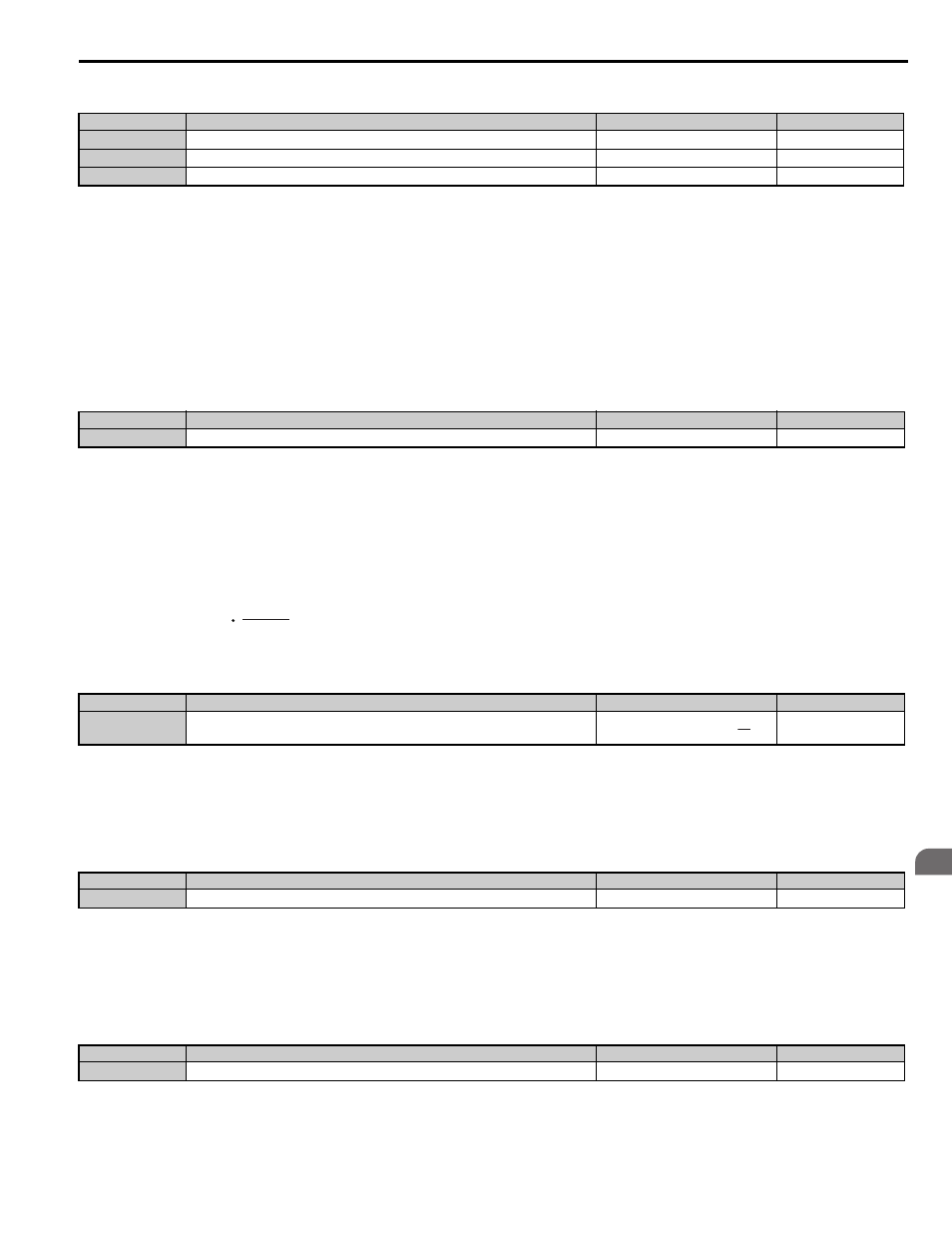F1-05: encoder 1 rotation direction selection, F1-06: pg1 pulse monitor output division ratio, F1-18: dv3 detection selection (clv/pm) – Yaskawa L1000E AC Drive Technical Manual for CIMR-LE Models for Elevator Applications User Manual
Page 187: F1-19: dv4 detection selection (clv/pm), Common_tmo, 6 f: option settings

5.6 F: Option Settings
YASKAWA ELECTRIC SIEP YAIL1E 01A YASKAWA AC Drive L1000E Technical Manual
187
P
a
ra
me
te
r De
ta
ils
5
Settings for Parameter F1-04:
Setting 0: Ramp to stop (uses the deceleration ramp set to C1-02)
Setting 1: Coast to stop
Setting 2: Fast Stop (uses the Fast Stop ramp set to C1-09)
Setting 3: Alarm only (drive continues operating while “dEv” flashes on the screen)
■
F1-05: Encoder 1 Rotation Direction Selection
Determines the direction indicated by the motor encoder signal.
Refer to PG Encoder Setup on page 104
for details on how to set the direction for the encoder and the motor.
Setting 0: Phase A leads phase B with an Up command.
Setting 1: Phase B leads phase A with an Up command.
■
F1-06: PG1 Pulse Monitor Output Division Ratio
Sets the ratio between the pulse input and the pulse output of a speed feedback option card as a three digit number, where
the first digit (n) sets the numerator and the second and third digit (m) set the denominator as shown below:
Example: To have a ratio of 1/32 between the speed feedback option card pulse input and output, set F1-06 = 032.
■
F1-18: dv3 Detection Selection (CLV/PM)
Sets the number of times the drive will detect a dv3 situation before triggering a dv3 fault. The drive detects a dv3
condition when the torque reference and speed reference are in opposite directions while the difference between the actual
motor speed and the speed reference is greater than 30%. Setting F1-18 to 0 disables dv3 detection.
Note: A common cause for a dv3 fault is the incorrect setting of E5-11. Make sure the correct encoder offset has been entered to E5-11.
■
F1-19: dv4 Detection Selection (CLV/PM)
Sets the number of pulses necessary to trigger a dv4 fault when there is a motor speed deviation opposite to the frequency
reference. Setting F1-19 to 0 disables dv4 detection.
Note: A common cause for a dv4 fault is the incorrect setting of E5-11. Make sure the correct encoder offset is set to E5-11.
No.
Parameter Name
Setting Range
Default
F1-04
Operation Selection at Deviation
0 to 3
3
F1-10
Excessive Speed Deviation Detection Level
0 to 50%
10%
F1-11
Excessive Speed Deviation Detection Delay Time
0.0 to 10.0 s
0.5 s
No.
Parameter Name
Setting Range
Default
<1> Determined by the control mode: 0 when A1-02 = 3, 1 when A1-02 = 7.
F1-05
Encoder 1 Rotation Direction Selection
0 or 1
No.
Parameter Name
Setting Range
Default
F1-06
PG1 Pulse Monitor Output Division Ratio
001 to 032, 102 to 132 (1 to
)
1
No.
Parameter Name
Setting Range
Default
F1-18
dv3 Detection Selection
0 to 10
10
No.
Parameter Name
Setting Range
Default
F1-19
dv4 Detection Selection
0 to 5000
128
f
Pulse Input
= f
Pulse Output
(1 + n)
m
common_TMo
1
32